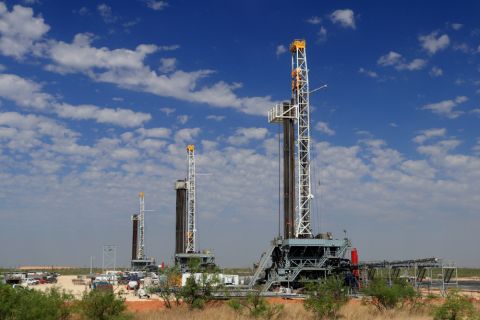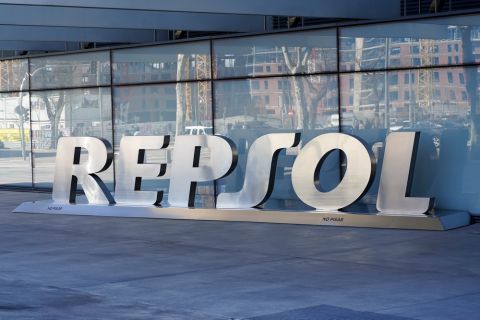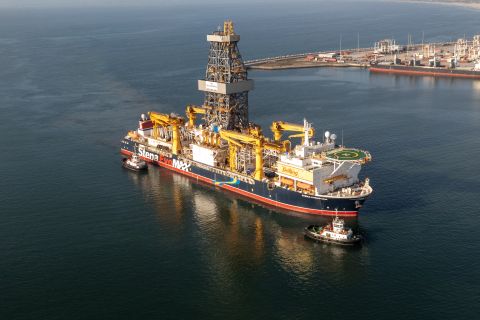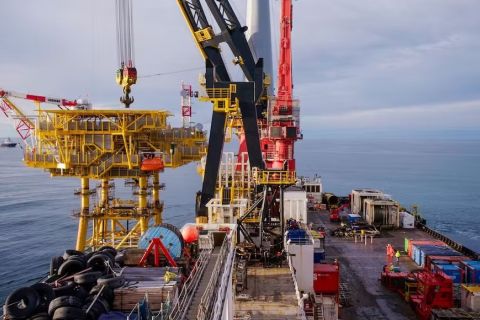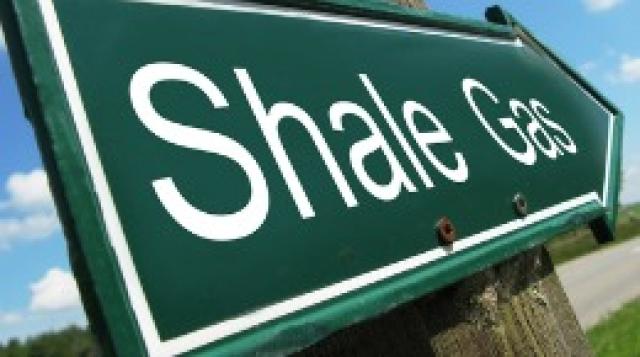
Not so long ago—in geologic terms—a sea that covered much of the western U.S. had a shoreline in New Mexico where the rock was named Gallup sandstone in the past century; the delta mud that encased it at this southern edge of the modern San Juan Basin was named Mancos shale. In time, oil and gas that were cooked in the fine-grained, Cretaceous-age shale intervals have migrated into the less-tight sandstone.
And that makes a play.
“When we pressure-pump our frac stimulation into it, we have a shale above us and one beneath us. We can’t break above and below the sandstone, so all the frac energy remains within the targeted interval,” says Steve Natali, senior vice president, exploration, for WPX Energy Inc.(NYSE: WPX)
Recently spun out of Williams Companies Inc. (NYSE: WMB), Tulsa-based WPX has worked the San Juan Basin’s many formations since 1983, ranging from the Fruitland coalbed and Mesaverde sandstones, which lie above Mancos shale, and Dakota sandstone below. Its 159,000 net acres host some 3,300 wells, which hold by production nearly all of its leasehold.
In 2008, it took a new look at the basin, exploring the Mancos in the northern, dry-gas window in southern Colorado; there, the chalky Niobrara sits within the shale. “We had a significant acreage position there,” Natali says. “Gas was about $8 an Mcf (thousand cubic feet). We were producing from formations above and below Mancos but, at the time, no one knew if the Niobrara member of the Mancos could produce commercially.”
WPX drilled four vertical, science wells, taking cores. In 2010, it made two horizontals in two zones. “Those wells came on very strong—about 17 million cubic feet a day—but we elected to choke them back to about 7 million to prevent damaging the formation.”
After three years online, estimates are each will make between 5.5- and 6 billion cubic feet (Bcf) of gas. But gas futures began tumbling in mid-2008, bottoming at below $2 by the spring of 2012. The Niobrara play in the northern San Juan Basin was put aside.
“It will be highly economic when gas prices recover,” Natali says. “We believe it’s a multi-trillion-cubic-foot (Tcf) resource waiting to be developed based on these discoveries.”
Looking for a liquids play instead, WPX considered the wet-gas window of the Mancos shale itself.
“We thought, ‘You can’t move oil through the Mancos shale because it isn’t permeable enough, but you could move wet gas or condensate through this shale. In the Eagle Ford, the wet gas is actually moving through the reservoir as a gas; as it comes up, it cools and the condensate falls out.
“It has to move as a gas because you simply can’t move liquids through these tight shales at a very high speed.”
After some study, it was determined that the wet gas wasn’t going to commercially move out of Mancos in the area.
“So we abandoned that effort,” Natali says.
Meanwhile, WPX looked at the 200-foot-thick Niobrara member of the 2,000-foot-thick Mancos at about 9,000 feet in the Piceance Basin in northwestern Colorado, taking core from a vertical and logging it. In late 2012, the company went in with a horizontal, 701-4 HN1 Williams GM, in Garfield County, bringing it on with 16 million cubic feet a day. In its first 10 months, it made some 2 Bcf and was still producing 3.5 million a day in early November from the over-pressured interval with a gradient of 0.9 psi per foot.
“That is the highest-flowing Niobrara well in the U.S. We’re offsetting it in several direction,” Natali says.
To enjoy the rest of this story, please check out Premium Blend on oilandgasinvestor.com
Recommended Reading
TPH: Lower 48 to Shed Rigs Through 3Q Before Gas Plays Rebound
2024-03-13 - TPH&Co. analysis shows the Permian Basin will lose rigs near term, but as activity in gassy plays ticks up later this year, the Permian may be headed towards muted activity into 2025.
Repsol to Drop Marcellus Rig in June
2024-04-26 - Spain’s Repsol plans to drop its Marcellus Shale rig in June and reduce capex in the play due to the current U.S. gas price environment, CEO Josu Jon Imaz told analysts during a quarterly webcast.
Stena Evolution Upgrade Planned for Sparta Ops
2024-03-27 - The seventh-gen drillship will be upgraded with a 20,000-psi equipment package starting in 2026.
TotalEnergies Fénix Platform Installed Offshore Argentina
2024-02-13 - First gas from the TotalEnergies-operated project is expected in fourth-quarter 2024.
Barnett & Beyond: Marathon, Oxy, Peers Testing Deeper Permian Zones
2024-04-29 - Marathon Oil, Occidental, Continental Resources and others are reaching under the Permian’s popular benches for new drilling locations. Analysts think there are areas of the basin where the Permian’s deeper zones can compete for capital.

